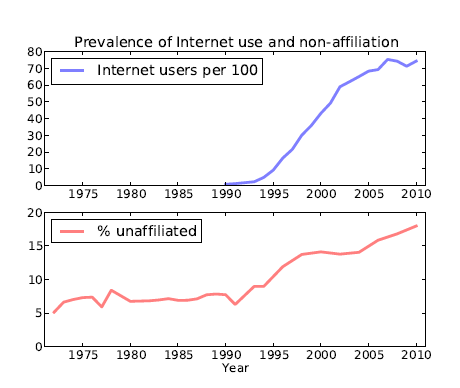A lovely example of how through evolution of 'selfish' genes over a prolonged period, humans, and very probably other placental mammals, have formed a mutually cooperative alliance with bacteria. Science has long recognised the role our microbiome of bacteria and fungi play in maintaining our health, and especially the role certain bacteria have in our gut where they are essential for absorbing some nutrients and vitamins.
Of course, there is no reason to think this system of mutual cooperation is unique to humans or even mammals since we share an essentially similar digestive system with all the deuterostome which are believed to have evolved some 558 million years ago, so it's a system which has been being refined and perfected for a very long time.
So how do we get our gut bacteria in early childhood? We have certainly acquired them within a few days of birth and it had been assumed babies are born with a sterile gut and acquire their bacteria from the mother's vagina during birth and from their general environment soon afterwards. Now, however a team led by Kjersti Aagaard of Texas Children's Hospital in Houston, Texas, USA has found that gut bacteria are present in meconium, the tary black fecal matter babies pass in the first day or two after birth which means they must have been present before birth.
Abstract
Humans and their microbiomes have coevolved as a physiologic community composed of distinct body site niches with metabolic and antigenic diversity. The placental microbiome has not been robustly interrogated, despite recent demonstrations of intracellular bacteria with diverse metabolic and immune regulatory functions. A population-based cohort of placental specimens collected under sterile conditions from 320 subjects with extensive clinical data was established for comparative 16S ribosomal DNA–based and whole-genome shotgun (WGS) metagenomic studies. Identified taxa and their gene carriage patterns were compared to other human body site niches, including the oral, skin, airway (nasal), vaginal, and gut microbiomes from nonpregnant controls. We characterized a unique placental microbiome niche, composed of nonpathogenic commensal microbiota from the Firmicutes, Tenericutes, Proteobacteria, Bacteroidetes, and Fusobacteria phyla. In aggregate, the placental microbiome profiles were most akin (Bray-Curtis dissimilarity <0.3) to the human oral microbiome. 16S-based operational taxonomic unit analyses revealed associations of the placental microbiome with a remote history of antenatal infection (permutational multivariate analysis of variance, P = 0.006), such as urinary tract infection in the first trimester, as well as with preterm birth <37 weeks (P = 0.001).
Copyright © 2014, American Association for the Advancement of Science.
K. Aagaard, J. Ma, K. M. Antony, R. Ganu, J. Petrosino, J. Versalovic, The Placenta Harbors a Unique Microbiome.
Sci. Transl. Med. 6, 237ra65 (2014).
To try to understand where they came from the team then examined the placenta from 320 women after birth, taking tissue samples from deep in the placenta to minimise the risk of contamination. Not only did they find bacteria present but they included the gut bacteria essential for metabolising nutrients and vitamins. However when they checked the genetic profile of these bacteria the result was even more surprising. They most closely resembled the bacteria normally found in the mouth, not the vagina. The conclusion was obvious, if more than a little surprising - bacteria must have travelled from the mothers' mouths to the fetal intestines, yet the only route must be via the mother's blood to the placenta and then either into the amniotic fluid to be swallowed by the fetus, or via the fetal circulation into the developing gut.
The placenta has its own ecology and these were not the bacteria we were expecting. Most people would have expected it to be a vaginal flora.
The team also found that some species of bacteria were more common in the placentae of women who had delivered before 37 weeks, i.e., prematurely, suggesting a link between bacteria and premature birth which ties in with other findings showing a link between gum disease in women premature births.James Kinross, colon surgeon,
Imperial College, London, UK
Imperial College, London, UK
So, knowing how fond creationists are of my blog, here's a little something for them to ponder on, and explain if they can. Why would an intelligent, benevolent creator invent this idiotic mechanism to help animals with guts absorb essential nutrients and vitamins from their food in the first place when it could have designed an efficient gut and why did it come up with a mechanism for getting these bacteria into the guts of developing fetuses which entails the risk of premature births and babies being born with serious illnesses?
There is, of course, no problem in understanding this as an evolved system in which the benefits outweigh the risks and which 'favours' only those genes which result in more descendants. Our guts evolved in the presence of bacteria, some of which had a utility value in helping us absorb certain nutrients which in turn removed any pressure to evolve more complex solutions and so we became committed to that evolutionary pathway. Cooperative alliances between replicators, even replicators from different species, are absolutely what the selfish gene view of Darwinian evolution predicts.
I appreciate it can't be easy trying to force-fit these little pieces of scientific evidence into a primitive superstition, but never-the-less, I'd appreciate if it a creationist or two could try.
'via Blog this'













